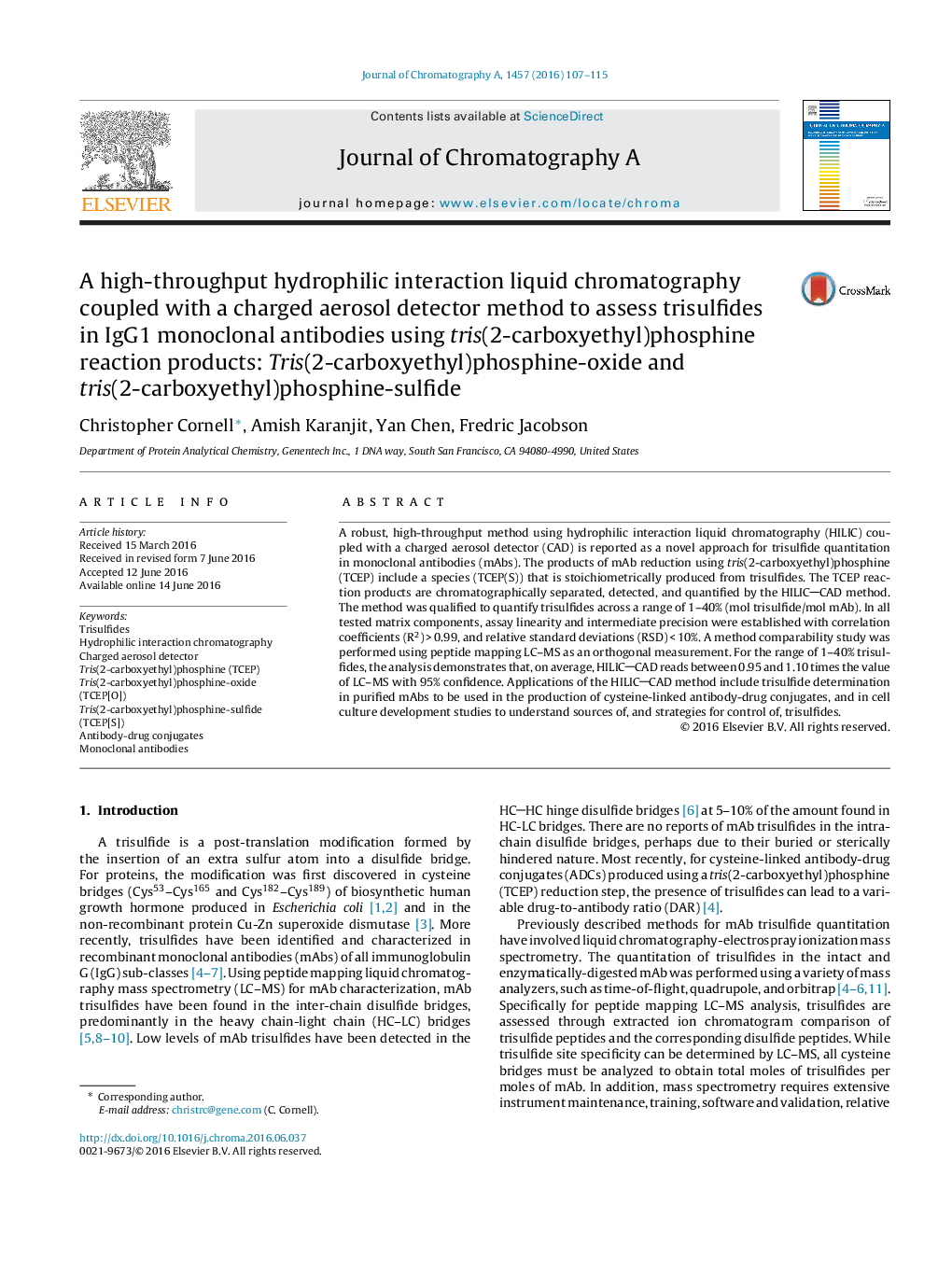| Article ID | Journal | Published Year | Pages | File Type |
|---|---|---|---|---|
| 1198666 | Journal of Chromatography A | 2016 | 9 Pages |
•A chromatographic HILICCAD method to measure levels of mAb trisulfide modifications.•Comparable results to the alternative method—peptide map with LC/MS detection.•Method applicable to cysteine-linked ADC production and cell culture process development.
A robust, high-throughput method using hydrophilic interaction liquid chromatography (HILIC) coupled with a charged aerosol detector (CAD) is reported as a novel approach for trisulfide quantitation in monoclonal antibodies (mAbs). The products of mAb reduction using tris(2-carboxyethyl)phosphine (TCEP) include a species (TCEP(S)) that is stoichiometrically produced from trisulfides. The TCEP reaction products are chromatographically separated, detected, and quantified by the HILICCAD method. The method was qualified to quantify trisulfides across a range of 1–40% (mol trisulfide/mol mAb). In all tested matrix components, assay linearity and intermediate precision were established with correlation coefficients (R2) > 0.99, and relative standard deviations (RSD) < 10%. A method comparability study was performed using peptide mapping LC–MS as an orthogonal measurement. For the range of 1–40% trisulfides, the analysis demonstrates that, on average, HILICCAD reads between 0.95 and 1.10 times the value of LC–MS with 95% confidence. Applications of the HILICCAD method include trisulfide determination in purified mAbs to be used in the production of cysteine-linked antibody-drug conjugates, and in cell culture development studies to understand sources of, and strategies for control of, trisulfides.
